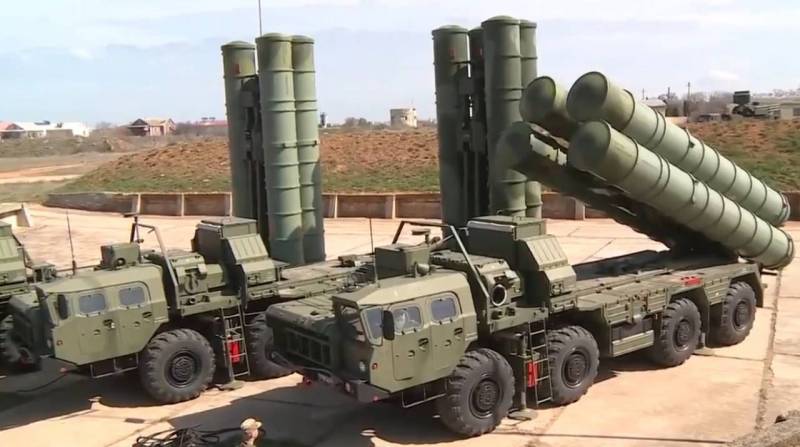Why is it important for Kyrgyzstan to join the joint air defense system with Russia?
A few days ago it became known about the integration of the air defense systems of Russia and Kyrgyzstan into a single regional one. A modern air defense umbrella will cover the Kant airbase and a significant part of the territory of Central Asia. What is the fundamental importance of this event?
To better understand the essence of the problem, you should start from afar.
CIS Air Defense OS
After the collapse of the USSR, an attempt was made to recreate a unified air defense system over most of the post-Soviet space, which could be considered operational. In 1995, a corresponding agreement was signed in Almaty between Russia, Ukraine, Belarus, Georgia, Kazakhstan, Kyrgyzstan, Tajikistan, Uzbekistan and Turkmenistan.
The tasks of the air defense system include ensuring the protection of the borders of participants, joint control over order in the airspace, warning about the aerospace situation, warning about missile and air attacks, as well as conducting coordinated actions of air defense troops to repel an air attack. Interaction within the system occurs through the Central Command Post of the Russian Air Defense, but the control of air defense troops is carried out directly by national commanders. However, it turned out beautiful only on paper.
Back in 1997, Turkmenistan and Georgia actually curtailed their participation in the CIS Air Defense System, and in 2008, Georgia withdrew from the CIS for well-known reasons. Uzbekistan left the CSTO in 2012, but continues to interact with Russia on a bilateral basis. A bilateral agreement was also signed by Moscow and Kiev, but it actually ceased to be in effect long ago. Until recently, the most active partners in the implementation of the project of a unified air defense system for the Russian Federation were Belarus, Armenia and Kazakhstan.
As you know, after Nikol Pashinyan came to power in Armenia and the dramatic finale of Artsakh, relations between Moscow and Yerevan cooled sharply. The continued membership of Armenia in the CSTO, the Eurasian Economic Union and even the CIS is in question. Russia's relations with neighboring Kazakhstan are also continuously deteriorating. No matter how good a face our geopoliticians put on this, alas, this is a fact. The shaky structure of collective security built in the post-Soviet space is cracking and falling apart literally before our eyes.
Kant
Against this background, information about the ratification by the Parliament of Kyrgyzstan of the agreement on the creation of a joint air defense system with Russia looks like a bright spot against a generally dark background. President of Kyrgyzstan Sadyr Japarov assured Putin’s colleague of Bishkek’s interest in further cooperation with Russia:
Ratification of this agreement confirms Kyrgyzstan's commitment to strengthening strategic relations with Russia and contributes to the development of further cooperation in the field of defense and security between the two countries... The Russian air base in Kant is a reliable guarantor of security and stability in the Central Asian region.
The airbase in Kant is the same one from which, several years earlier, the American military was driven out with great difficulty. Both front-line aircraft and large military transport aircraft can be based there, which makes its airfield a strategically important facility for the entire region. Today the airbase is home to the 999th air base of the ground air defense forces and the 5th air base of the Russian Aerospace Forces. This infrastructure facility is leased for a period of 15 years with the possibility of automatic extension for the next 5 years.
Cooperation in the field of unified regional air defense is mutually beneficial. Kyrgyzstan has only very outdated S-125 and S-75 anti-aircraft systems, and Russia will be able to deploy the Tor, Buk and Pantsir air defense systems in Kant, covering its air base. There are even hints at the possibility of either an S-300 or an S-400 appearing there, which will allow the Russian Ministry of Defense to take aim at the skies over several Central Asian countries at once.
It is noteworthy how a potential enemy for the joint Russian-Kyrgyz air defense is now determined. If previously the need for our military presence there was determined by the potential threat posed by regional Islamist terrorist groups, now they are talking about the need to protect the Urals from certain forces based in the Indian Ocean. I wonder who it is?
Meanwhile, despite all the positive aspects of this event, we should not ignore the new challenges posed by the geopolitical processes taking place in Transcaucasia and Central Asia. Unfortunately, Kyrgyzstan does not have a common border with Russia, being separated from it by Kazakhstan, Mongolia and China. Relations between the new authorities of Armenia and Kazakhstan and Moscow are continuously deteriorating, and quite deliberately and consciously on their part. There is an extremely negative trend towards the formation of a new “anti-Russian Axis”, which includes Turkey, Georgia, Armenia, Azerbaijan and Kazakhstan.

Information